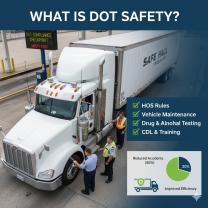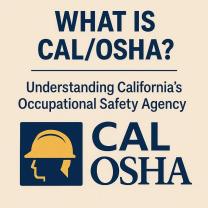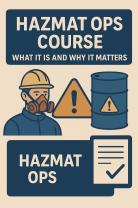How to become an on site safety manager?
Becoming an on-site safety manager typically requires a combination of education, experience, and specific certifications. Here are the steps you can take to pursue a career as an on-site safety manager:
Educational Background:
- Obtain a high school diploma or equivalent.
- Consider pursuing a bachelor's degree in occupational health and safety, environmental science, engineering, or a related field. While a degree is not always mandatory, having one can enhance your qualifications.
Gain Relevant Work Experience:
- Acquire practical experience in the field of safety. This could involve working in entry-level safety positions, internships, or jobs related to occupational health and safety.
- Some on-site safety managers start their careers as safety officers, coordinators, or technicians to gain hands-on experience.
Certifications:
- Obtain relevant certifications. Certifications can enhance your knowledge and demonstrate your commitment to the field. Consider certifications such as:
- Occupational Safety and Health Administration (OSHA) certifications: These include OSHA 30-Hour and OSHA 500.
- Certified Safety Professional (CSP): Offered by the Board of Certified Safety Professionals (BCSP).
- Associate Safety Professional (ASP): Also offered by the BCSP, it is a precursor to the CSP.
- Obtain relevant certifications. Certifications can enhance your knowledge and demonstrate your commitment to the field. Consider certifications such as:
Continuing Education:
- Stay updated on industry trends, regulations, and best practices through ongoing education. Attend workshops, conferences, and seminars related to safety management.
Networking:
- Connect with professionals in the field of safety management. Attend industry events, join professional organizations, and participate in online forums to build a network of contacts.
Develop Soft Skills:
- Strong communication and interpersonal skills are crucial for an on-site safety manager. Develop your ability to convey safety information clearly and effectively, and work well with diverse teams.
Knowledge of Regulations:
- Stay informed about local, state, and federal safety regulations. On-site safety managers must be well-versed in compliance requirements to ensure a safe work environment.
Apply for On-Site Safety Manager Positions:
- Once you have gained the necessary education, experience, and certifications, start applying for on-site safety manager positions. Look for job opportunities in industries such as construction, manufacturing, and healthcare.
Professional Development:
- Pursue opportunities for professional development. This could involve advanced certifications, additional training programs, or obtaining a master's degree in occupational health and safety.
Stay Current and Adapt:
- Safety regulations and best practices can evolve, so it's important to stay current with industry changes. Adapt to new technologies and methodologies that enhance safety management.
Remember that the specific requirements may vary by location and industry, so it's essential to research the specific qualifications and certifications that are relevant to the region and sector you are interested in working in.
What steps should one take to pursue a career as an on-site safety manager?
Becoming an on-site safety manager is a rewarding path, but it requires dedication and preparation. Here are some steps you can take to pursue this career:
Education and Training:
- Explore academic options: Consider a bachelor's degree in occupational health and safety or a related field like engineering, construction management, or environmental science. Some employers prefer a master's degree, especially for higher-level positions.
- Obtain relevant certifications: Certifications like Certified Safety Professional (CSP), Construction Health and Safety Technician (CHST), or Certified Industrial Hygienist (CIH) demonstrate your expertise and enhance your resume. Check for regional or industry-specific certifications too.
- Complete training programs: Look for courses or workshops on safety management, risk assessment, accident investigation, and emergency response. Many professional organizations offer such programs.
Gaining Experience:
- Start in entry-level roles: Consider positions like safety technician, safety coordinator, or safety inspector. This provides valuable hands-on experience and familiarizes you with safety practices in specific industries.
- Seek internships or volunteer opportunities: Internships in safety departments or volunteering with safety organizations can offer valuable experience and networking opportunities.
- Shadow experienced professionals: If possible, shadow an on-site safety manager to observe their daily tasks and responsibilities.
Developing Skills:
- Technical skills: Hone your knowledge of relevant safety regulations, standards, and best practices. Understand hazard identification, risk assessment, and control strategies.
- Soft skills: Communication, negotiation, collaboration, and leadership are crucial. You need to effectively communicate safety procedures, engage with employees, and build rapport with various stakeholders.
- Analytical skills: Ability to analyze data, identify trends, and draw conclusions is essential for accident investigation and proactive safety monitoring.
Preparing for your job search:
- Network actively: Attend industry events, join professional organizations, and connect with safety professionals on LinkedIn. Building your network can open doors to job opportunities.
- Craft a compelling resume: Highlight your educational background, certifications, relevant experience, and key skills. Tailor your resume to each job you apply for.
- Practice your interview skills: Prepare for common interview questions and emphasize your passion for safety, commitment to continuous learning, and ability to handle challenging situations.
Additional Tips:
- Stay up-to-date: The safety field constantly evolves, so keep yourself updated by attending conferences, reading relevant publications, and participating in continuing education programs.
- Focus on a specific industry: Specializing in a particular industry, like construction, manufacturing, or healthcare, can make you a more attractive candidate to employers.
- Demonstrate strong safety culture: Show your commitment to a proactive safety culture, not just enforcing rules. Focus on building a positive safety environment where everyone is involved.
Becoming an on-site safety manager takes time and dedication, but the rewards are significant. By following these steps and staying focused on your goals, you can successfully land your dream job and make a real difference in protecting people's lives.
Remember, this is a general roadmap, and specific requirements may vary depending on your location and desired industry.
I hope this information helps!












